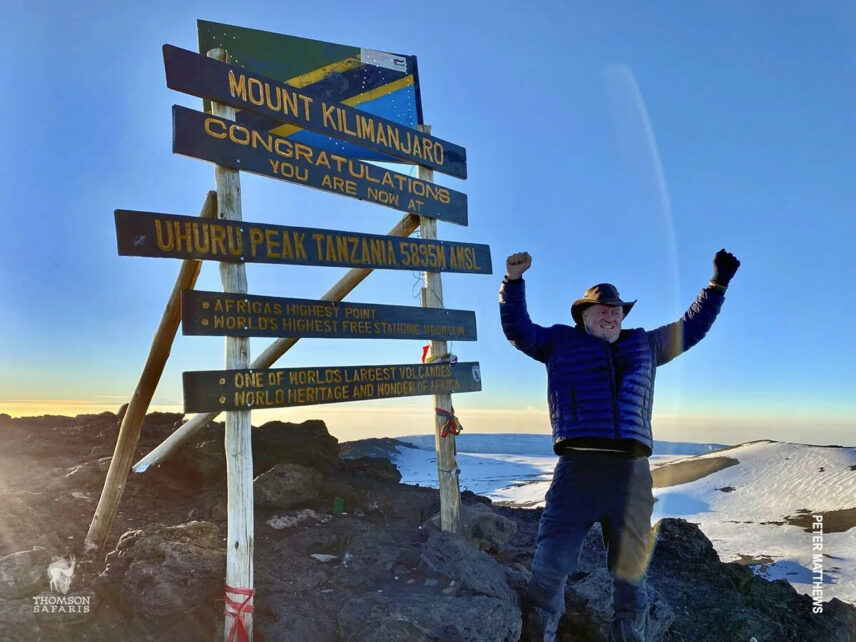After a life-saving liver transplant in 2017, Peter Matthews set a lofty recovery goal: trek Mt. Kilimanjaro, the world’s tallest free-standing mountain. It took years of training and fortitude, but he finally set out to achieve this in 2021, when his trek to Kili’s Uhuru Peak began.
Here is Peter’s incredible story of recovery, growth, and overcoming adversity.
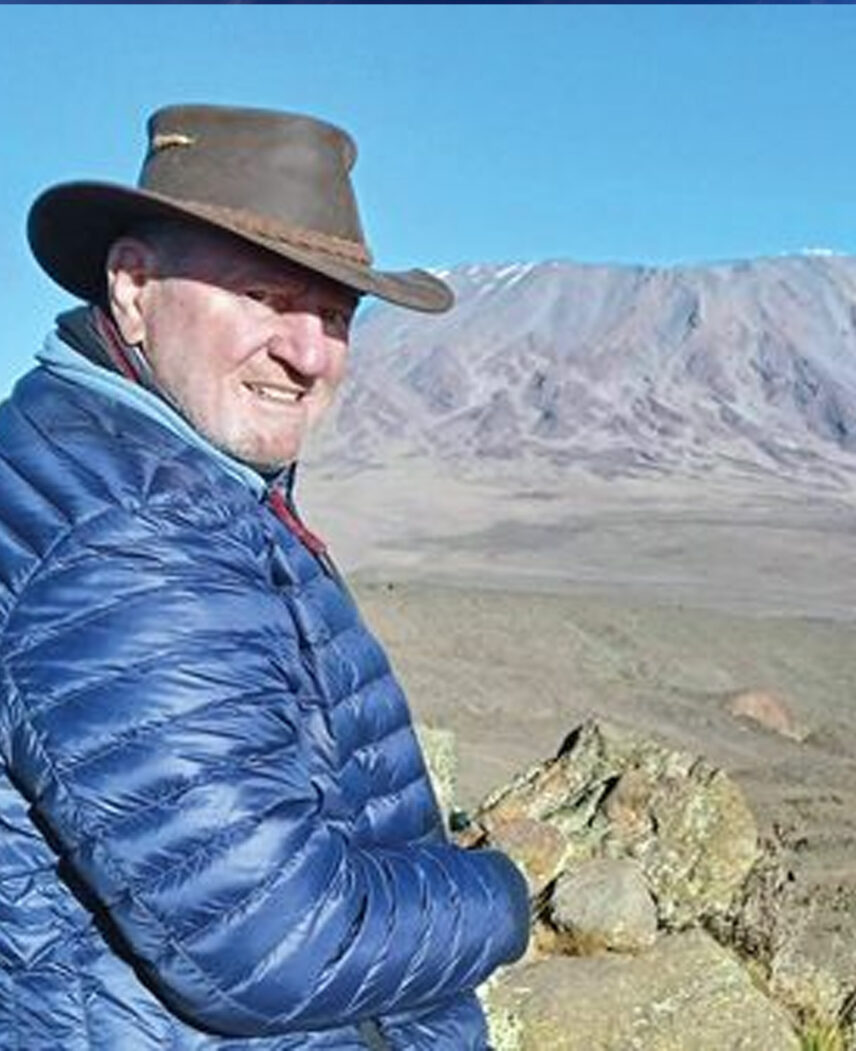
“I couldn’t stand on one foot”
Peter’s condition was bleak in 2017. He was fighting liver disease, which left him unsure of the future. Thanks to an anonymous donor and the organization Gift of Life, Peter was able to secure the organ he needed to survive.
“I’m not being melodramatic,” Peter said. “It was either get a transplant or check out. The fact that a donor organ was available really did give me another life.”
The hardest part of his treatment was over, but Peter had a long road to recovery. He was under 50% of his original body weight and had no muscle tone.
“I was using a walker to learn to walk again,” Peter said. “I couldn’t stand on one foot. It was a long, really tough recovery.”
What drove Peter was a memory: in the early 80s, he was working in Kenya and saw Mt. Kilimanjaro across the Tanzanian border. He promised himself he would attempt to climb it if he ever had a chance. Recovery training, he realized, was his chance.
“I decided, ‘I’m going to get through this. I’m going to go climb that mountain,’” Peter said.
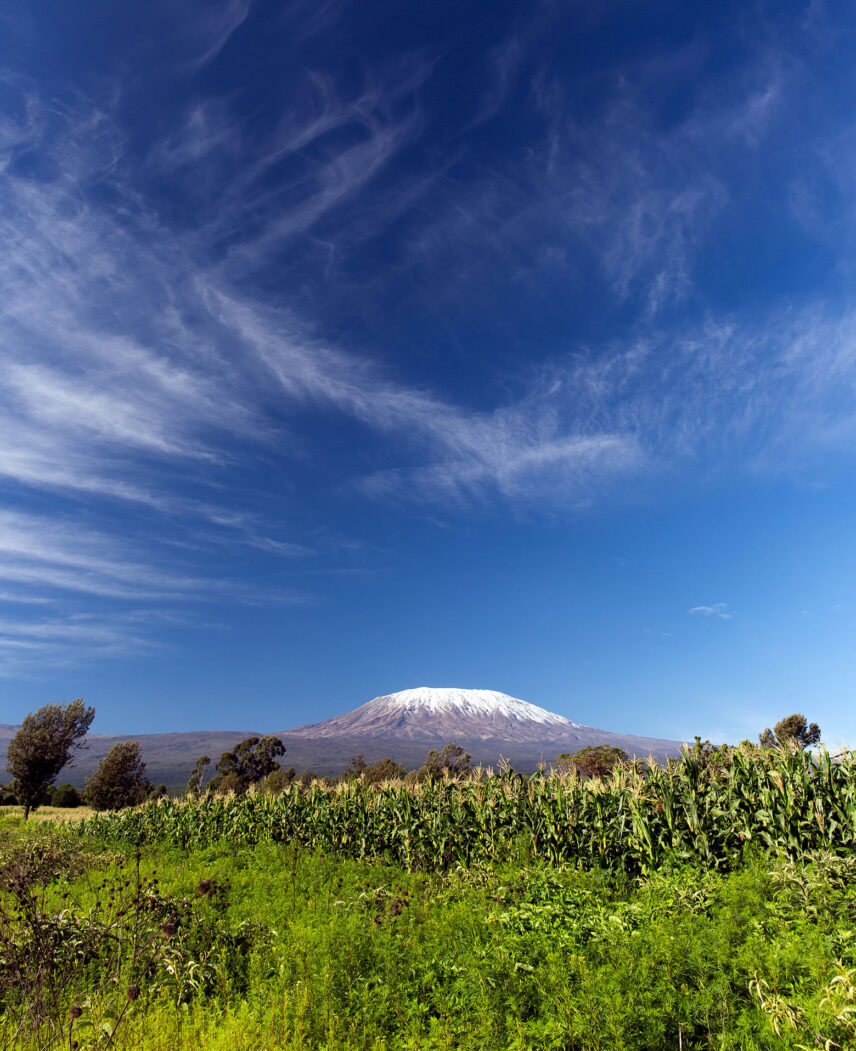
Returning to Africa
Years of recovery and training finally led Peter back to East Africa. “I had a rush of memories of being in Kenya,” he said. “Little things like the smells in the air came back to me. I felt at ease. I was excited. I was ready to roll.”
Peter met his group and porters and learned about their trek. He was climbing Kili on the Grand Traverse, a 10-day route paced to achieve maximum acclimatization time. His ascent circumnavigated the mountain, with three days at about 13,000’ feet to allow plenty of time for altitude adjustment.
Overall, Peter said he was confident, but had no hubris when it came to reaching the summit.
“I’d read about failed attempts, and knew my weakness was aerobic,” Peter said. “I felt good about my muscle tone–but could my lungs fuel them?”
The Trek
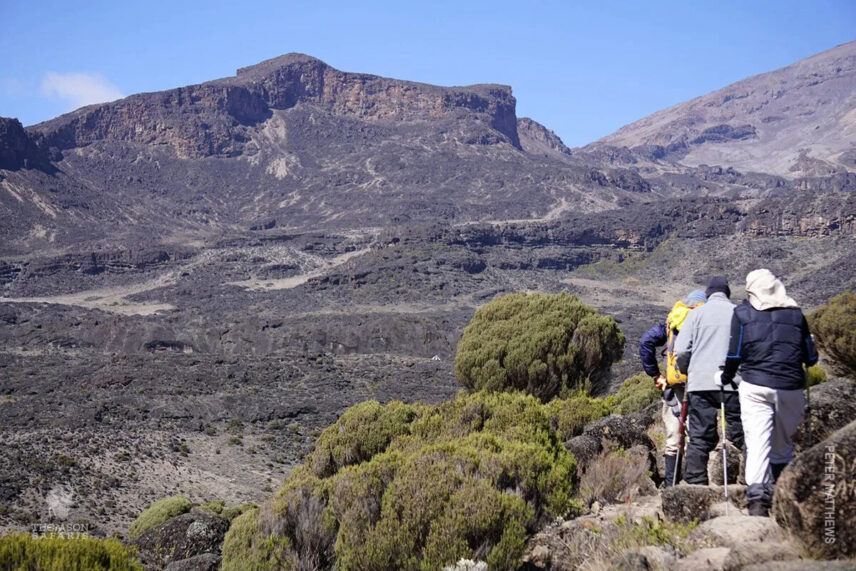
The first few days asked everything of Peter. He was on the trail every morning by 7 a.m., hiking through tough, changing conditions. In some places the gravel was loose like ball bearings, and in others he had to avoid rocks and other hazards to avoid falling on the path.
“I found that Kilimanjaro is not subtle,” Peter said. “She asks for all your senses, physical and mental strength. Completely and continually. Half measures will not do.”
Though Peter experienced no problems with dizziness or nausea, in part because of ample acclimatization time, he was battling with familiar knee troubles and a torn rotator cuff. He had to watch every step he took to the top of Kili – 19,341’ above sea level – to make sure he wouldn’t fall.
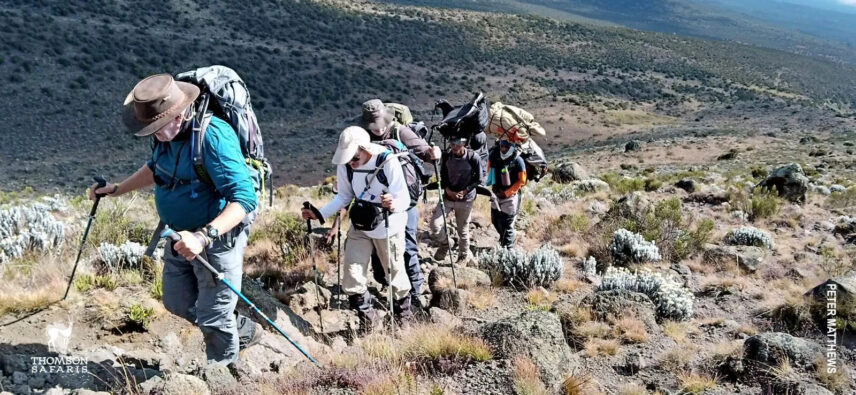
Even as he carried fatigue from one day into the next, he drew fortitude from his personal motto, “Never quit.”
“There was zero question whether I was going to find whatever I could to keep taking one step after another,” he said. “I was going to go until I couldn’t go any further.”
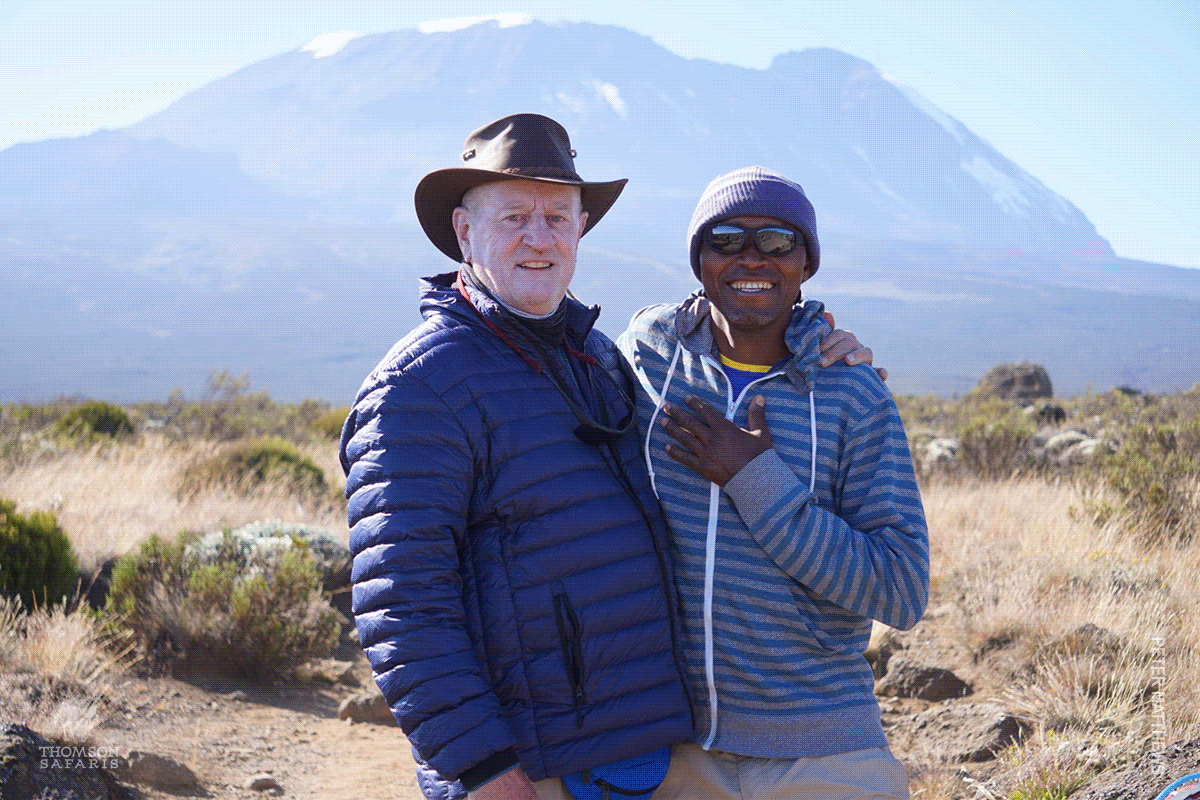
Porters and guides on Peter’s trek
Helping him get there was a team of 30 porters. Every morning they set out before Peter did, carrying tents, beds, food, cooking equipment, propane and furniture to the next campsite. Each day, they had everything set up for him by the time he arrived into camp.
“Some days, they would venture back to the trail to meet us and carry our packs to the camp,” he said. “I was and am stunned by their generosity of spirit.”
Peter also had a little individualized help along the way – his personal porter and wingman, Riziki, was never more than 10 feet away during the trek. For many trekkers like Peter, trusting your porters plays a huge role in your success on Kili. Riziki anticipated his needs, often reminding him remember to drink water, take breaks and stay focused on his steps.
“He encouraged me, patted my back when I needed it,” Peter said. “I felt all the porters were so invested in us making it. They called me babu, grandfather. They were just wonderful.”
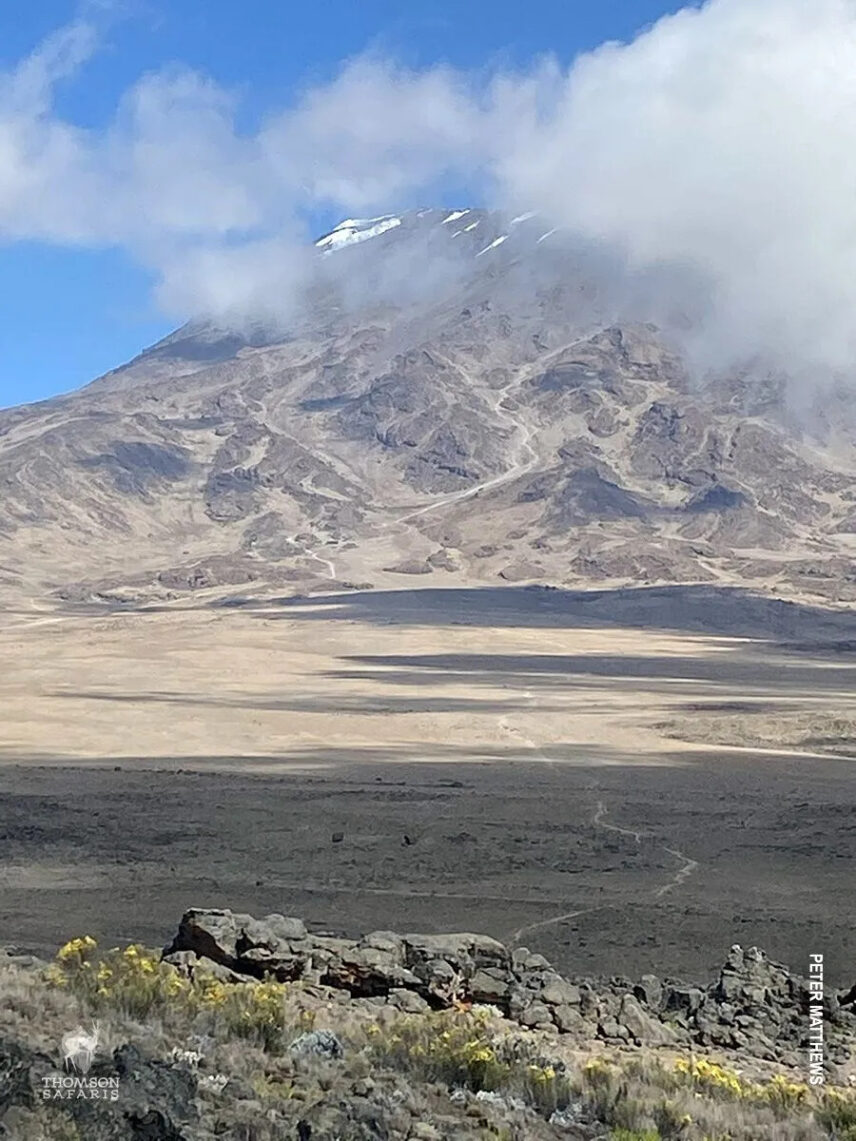
“Five Miles to Mars”
On day seven, Peter reached the Saddle, a barren five-mile-long plateau connecting Kilimanjaro’s peak with its neighbor, Mawenzi, at 14,500′.
“It’s five miles of Mars, alpine desert,” Peter said. “I could see the giant rising from the other side.” I asked the guides, ‘Do we zig-zag up there?’ They said, ‘Not exactly.’”
Peter and his group trudged straight up the Saddle for every step of those five miles. After the mentally and physically exhausting task, Peter went to bed that night and felt the strongest hesitation he felt so far during the trek.
“I had an unsettled feeling like, ‘Can I do this?’”
Surreal Uhuru
Summit day, 4:00 a.m. In the morning darkness Peter and his group set out with Riziki and their guides. Peter said he avoided looking up because the mountain was mammoth and awe-inspiring in a way that intimidated him. And during the last thousand-feet of his trek, he realized his body was sending him a message: You can’t do this. But Peter trudged on.
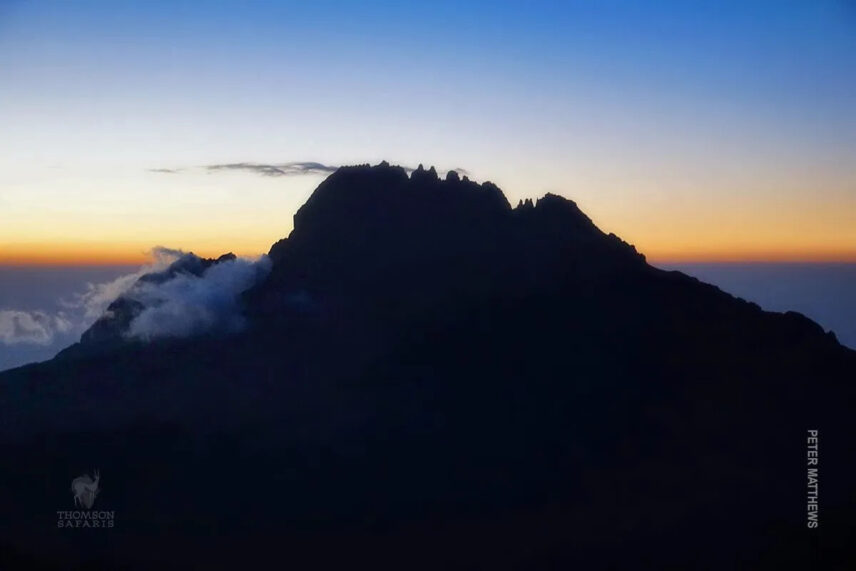
“I stopped climbing with my body, and I started climbing with my mind and my heart,” Peter said.
And finally, after eight long days of trekking, after three long years of recovery, Peter made it: Uhuru Peak. Sunlight bathed the mountain, and no winds stirred to chill him. The weather was perfect.
“I’ve read stories about rain and clouds at Uhuru Peak, and I was thinking, ‘How freaking lucky am I?’” Peter said. “It was a wonder I made it. I told my kids, ‘I felt like I could reach out and touch the sky.’”
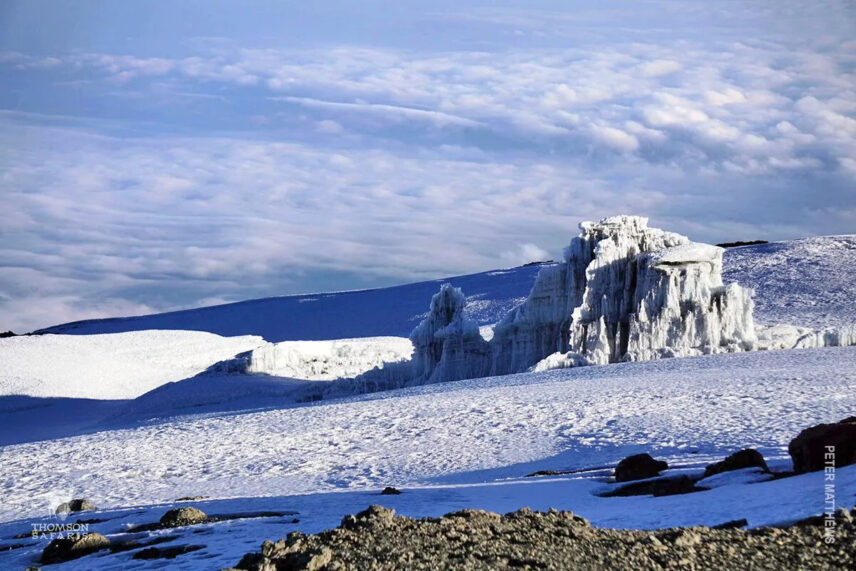
Peter hopes his story of recovery and triumph helps people realize everyone is capable of much more than they give themselves credit for.
“If you have a big challenge, decide that you’re going to do it and never, ever, quit on it,” he said. “If a 68-year-old grandfather with a newly transplanted liver can do it, anyone can.”
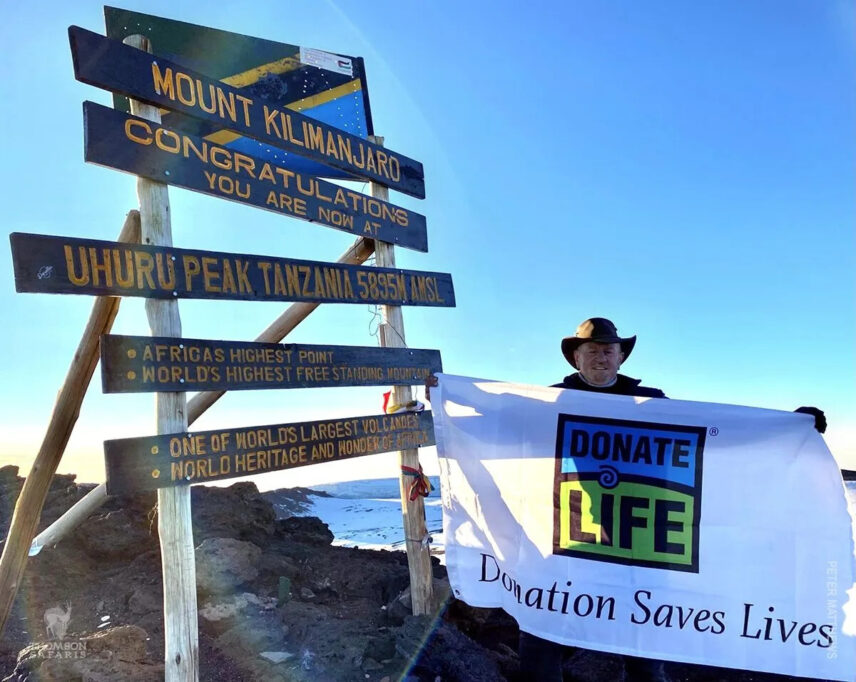
Click here to learn more about the Gift of Life, the organization that saved Peter.
